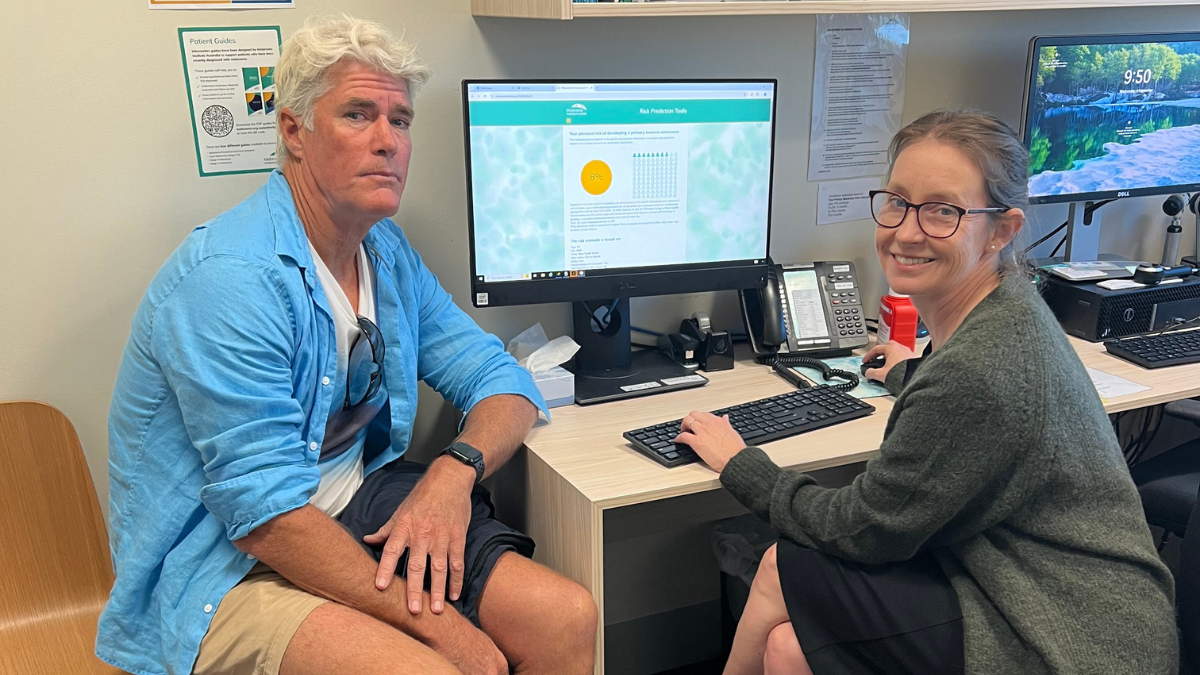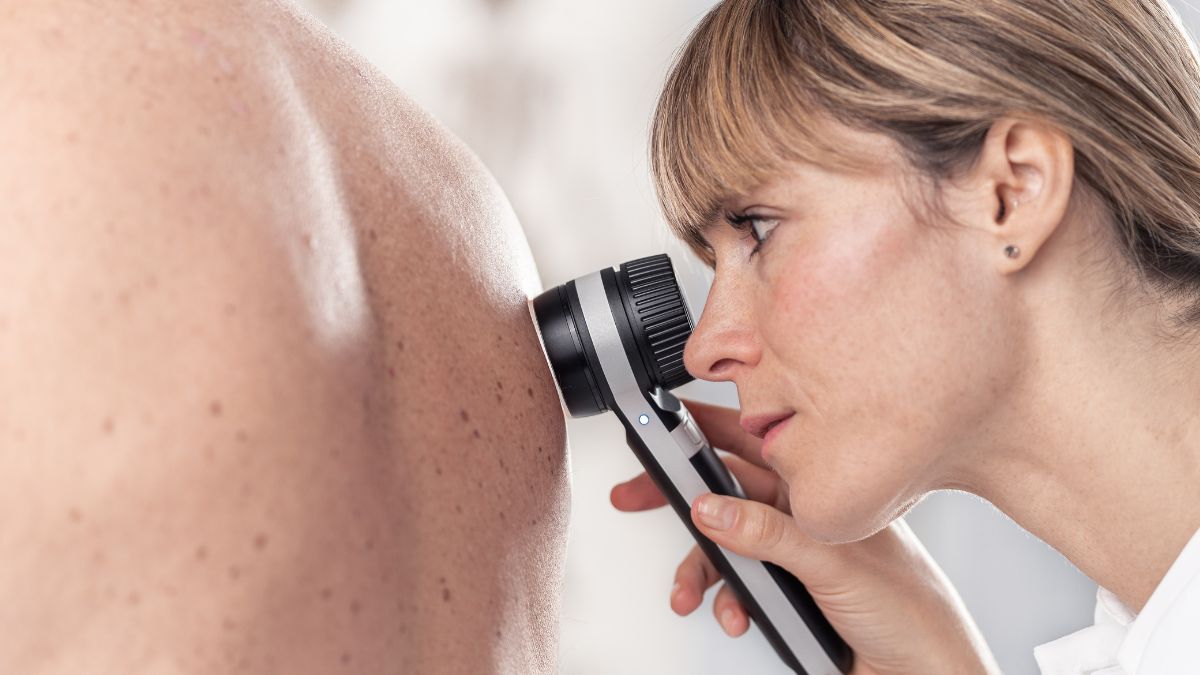Australians are being urged to take sun safety seriously as the weather warms up, with Bondi Rescue star Tommy Woodriff sharing his skin cancer risk as a warning to others.
Tommy has spent his lifetime in or on the water – as an elite swimmer, paddler, and lifeguard – and is well known to Aussies as part of the Bondi Rescue team. Due to his high level of sun exposure over many decades, Tommy is deemed at higher risk of developing melanoma or other forms of skin cancer.
Tommy underwent a skin check on Wednesday 4 September by Associate Professor Linda Martin at Melanoma Institute Australia’s The Poche Centre at Wollstonecraft.
‘We all need to take our skin seriously,’ Tommy said. ‘As a lifeguard, I am responsible for the safety of beachgoers in the water, but we also need to be vigilant out of the water. Our sun is intense, and sun safety needs to be a part of our daily routine to protect our health now and for the future.’
‘Over the years, I probably haven’t been as vigilant with sun safety as I should have been, so I want my skin health journey to stand as a warning to others to always protect their skin whilst enjoying our great outdoors.’
Australia has the highest melanoma rates in the world, with one person diagnosed with the disease every 30 minutes, and one person dying from melanoma every 6 hours. Melanoma is also the most common cancer in 20 to 39-year-old Australians.
2024 Australians of the Year, Professor Georgina Long AO and Professor Richard Scolyer AO, have spent their year urging Australians to take sun safety seriously and trying to tackle the glamourisation of tanning in social media and advertising.
Associate Professor Linda Martin from Melanoma Institute Australia, who assessed Tommy’s skin, said our bronzed Aussie culture had a lot to answer for.
‘A tan is skin cells in trauma, and we need to afford sun safety the same priority as other safety measures like swimming between the flags,’ A/Prof Martin said. ‘To have Tommy sharing his skin health journey today, whatever that may find, is an important step in changing our tanning culture.’





